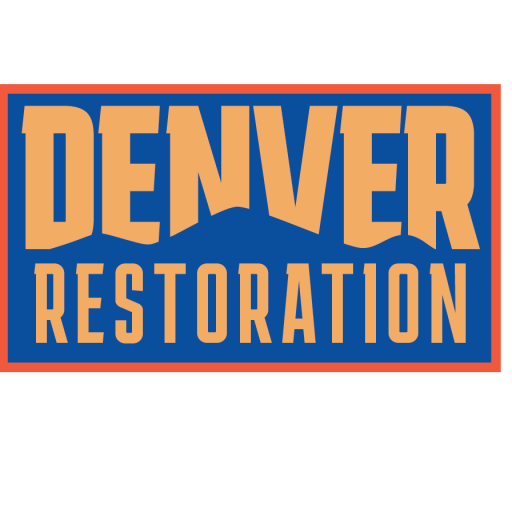Understanding and Assessing Water Damage
Water damage is a significant and unexpected ordeal for any homeowner or property manager. The immediate need for a quick water damage repair can be overwhelming. The first step towards an efficient cleanup is understanding the extent of the damage. Recognizing the type of water that caused the damage, the size of the area affected, and potential health risks are crucial for successful water restoration.
Types of Water Damage
Water damage can be caused by three primary types of water: Clean water, gray water, and black water. Clean water poses no immediate threat to health, while gray and black water are potentially unsafe, requiring immediate attention. Identifying the type of water involved plays a crucial role in determining the necessary cleanup process.
Size and Severity of the Damage
The size of the affected area drastically influences the cleanup effort. Smaller areas might be manageable, but extensive damage often warrants professional assistance. The severity of the damage also matters. Light damage can often be resolved quickly, while more severe damage might require extensive mold and asbestos removal, for instance.
Identifying Potential Health Risks
- Contaminated Water: Gray and black water can carry harmful pathogens that pose health risks. Depending on the source, these waters can include bacteria, viruses, fungi, and other microorganisms.
- Mold Growth: Mold can rapidly grow in damp environments, causing health concerns such as allergies and respiratory issues. Proper mold testing and removal is a vital part of a water damage restoration process.
- Structural Damage: Water can weaken the structure of a property, causing potential safety hazards. A thorough inspection can address these issues.
Efficient Cleanup Techniques and Equipment
Swift action is a key factor in minimizing water damage aftermath. Effective techniques combined with high-grade equipment make the process of water restoration efficient and thorough. From the initial extraction of water to the restoration of the affected areas, every step is vital for achieving optimal results. Expert water damage services leverage innovative tools and techniques to restore your property quickly.
The Importance of Speedy Water Damage Repair
Time is of the essence when it comes to water damage. The more time that passes, the more damage the water can cause. It can seep into floors, walls, and furniture, increasing the scope and cost of repair. A quick response aids in minimizing the damage, reducing costs and restoration time.
Understanding how your insurance coverage applies to water damage scenarios can be complex yet essential. It’s crucial to know your rights and responsibilities as a property owner and the specific details of your insurance policy. Moreover, adherence to environmental and health safety regulations guarantees a safe and compliant restoration process. Reputable restoration companies should guide property owners through the insurance claims process while ensuring legal compliance during cleanup and restoration.
The Role of Professional Water Restoration Services
Professional water restoration services offer invaluable expertise and resources when dealing with water damage. From damage assessment and estimation, restoration techniques and equipment, and customer communication during the crisis, professionals can fast-track your cleanup process with efficiency.
Benefits of Professional Water Restoration:
- Quick and efficient water damage repair: Professionals act promptly to prevent further damage, utilizing advanced equipment and techniques.
- Expert advice: Restoration professionals can help discern salvageable items and guide you through necessary steps of restoration.
- Help with insurance claims: Professionals can assist you in understanding your coverage and file an accurate claim, minimizing out-of-pocket expenses.
- Crisis management: Skilled experts can ease the stress of dealing with a water damage crisis, offering support and crucial communication throughout the process.
Ultimately, taking immediate action and employing the right professional help can make the daunting process of water restoration efficient, cost-effective, and manageable.
Understanding Fire Damage Restoration
Fire incidents can cause significant and extensive damage to a property. Similar to water damage, the key to mitigating the damage lies in acting quickly and correctly. Understanding fire and smoke damage, the relevant safety concerns, and the cleanup process is integral to a successful fire restoration operation.
Understanding the Types of Fire Damage
The type and extent of fire damage can significantly vary depending on the materials involved in the fire, and the intensity and duration of the flames. For example, a fire involving paper or wood materials has different cleanup requirements compared to a fire started by flammable liquids or electrical equipment. Each type of fire results in its unique residue and destructive patterns that need to be dealt with in specific ways.
Dealing With Smoke Damage
Smoke damage is another critical aspect of fire damage that requires a specialized approach. Smoke and soot particles can infiltrate various parts of a building, causing discoloration, corrosion, and lingering unpleasant odors. Effective smoke cleanup involves detailed assessment and the use of advanced odor elimination techniques to ensure a wholesome restoration process.
Fire Damage Health and Safety Concerns
Fire damage can result in significant health and safety risks, including structural instability, exposure to harmful substances, and air quality issues. Fire restoration professionals are equipped with the necessary knowledge and experience to address these issues while prioritizing the health and safety of the occupants.
Efficient Fire Damage Restoration Techniques and Equipment
Fire restoration is a multifaceted process that includes removing damaged components, cleaning, sanitizing, deodorizing, and rebuilding the affected areas. Just as with water damage, innovative tools and techniques play a crucial role in a successful fire damage restoration process. Professional fire damage restoration services are equipped with advanced tools and technologies to restore a property to its pre-incident condition.
Insurance and Legal Considerations for Fire Damage
Understanding your insurance coverage and navigating the claims process is essential after a fire incident. It’s important to know the coverage details of your policy, including limits and deductibles. Professional restoration firms can guide property owners through this complex process, ensuring that all relevant paperwork is filed correctly to receive rightful compensation.
The Role of Professional Fire Restoration Services
Professional restoration services offer comprehensive solutions in the aftermath of a fire damage incident. From assessing the extent of damage, evaluating salvageable and non-salvageable items, to carrying out the restoration work and offering customer support throughout the process, professionals bring invaluable resources to the table.
Benefits of Professional Fire Restoration:
- Efficient damage repair: A professional team can quickly carry out the necessary cleanup and repair works, preventing further damage, and restoring your property in a timely manner.
- Detailed inspection and advice: Restoration experts carry out a thorough inspection to determine the extent of the damage and provide advice on the optimal recovery strategy.
- Assistance with insurance claims: As with water damage, fire restoration professionals can offer critical assistance in handling insurance claims, helping property owners understand their coverage and file accurate claims.
- Supportive crisis management: Professionals provide seamless communication and assistance throughout the restoration process, easing the stress associated with fire damage.
Mold Remediation in Water and Fire Damage Restoration
Mold growth is a common problem following both water and fire damage incidents. Due to high humidity and damp conditions typically present after these incidents, mold spores can quickly grow and multiply, posing health risks to building occupants. Therefore, a crucial part of water and fire damage restoration is efficient mold remediation.
Understanding Mold Damage
Mold is a type of fungus that thrives in moist conditions. If left untreated, it can disrupt indoor air quality and cause adverse health effects, including allergies and respiratory conditions. Moreover, it can cause significant property damage, deteriorating building materials, and compromising structural integrity over time.
Professional Mold Remediation Services
Professional mold remediation services include a comprehensive range of solutions, including identification of mold species, assessment of mold-induced damage, and the implementation of safe and effective mold removal methods. Expert mold remediation services ensure the complete eradication of mold colonies and the prevention of future infestations.
Wrapping up
The process of restoring a property after water or fire damage is a complex and demanding task. It requires a thorough understanding of damage types, potential health risks, efficient cleanup techniques, and legal and insurance issues. Employing professional restoration services ensures the efficient and timely restoration of your property, reducing stress and offering essential support in a time of crisis.
Preventive Measures for Future Restoration
While it’s crucial to know how to react in the event of water or fire damage, taking preventive measures to avoid such occurrences should be a priority for every property owner. Regular maintenance and inspections, installation of fire and water leak detectors, and timely repair of potential risk factors can significantly reduce the chances of severe property damage.
In the end, understanding the process of water and fire damage restoration and mold remediation helps property owners make informed decisions in times of crisis. Paired with preventive measures and the expertise of professional restoration services, this knowledge will prove invaluable for maintaining a safe, healthy, and damage-free property.

